Novel Optical Kerr Switching Photonic Device Based on Nonlinear Carbon Material
Abstract
:1. Introduction
2. Materials and Characterization
3. Au/CB-Based Optical Kerr Switcher
3.1. Theory of the Kerr Switch
3.2. Experimental Procedure and Discussion of Results
4. Conclusions
Author Contributions
Funding
Data Availability Statement
Conflicts of Interest
References
- Willner, A.E.; Khaleghi, S.; Chitgarha, M.R.; Yilmaz, O.F. All-optical signal processing. J. Light. Technol. 2014, 32, 660–680. [Google Scholar] [CrossRef]
- Slavík, R.; Parmigiani, F.; Kakande, J.; Lundström, C.; Sjödin, M.; Andrekson, P.A.; Weerasuriya, R.; Sygletos, S.; Ellis, A.D.; Grüner-Nielsen, L.; et al. All-optical phase and amplitude regenerator for next-generation telecommunications systems. Nat. Photonics 2010, 4, 690–695. [Google Scholar] [CrossRef]
- Bao, Q.; Loh, K.P. Graphene Photonics, Plasmonics, and Broadband Optoelectronic Devices. ACS Nano 2012, 6, 3677–3694. [Google Scholar] [CrossRef] [PubMed]
- Novoselov, K.S.; Geim, A.K.; Morozov, S.V.; Jiang, D.; Zhang, Y.; Dubonos, S.V.; Grigorieva, I.V.; Firsov, A.A. Electric field effect in atomically thin carbon films. Science 2004, 306, 666–669. [Google Scholar] [CrossRef] [PubMed]
- Bao, Q.; Zhang, H.; Wang, B.; Ni, Z.; Lim, C.H.Y.X.C.; Wang, Y.Y.; Tang, D.Y.D.; Loh, K. Broadband graphene polarizer. Nat. Photonics 2011, 5, 411–415. [Google Scholar] [CrossRef]
- Sulimany, K.; Lib, O.; Masri, G.; Klein, A.; Fridman, M.; Grelu, P.; Gat, O.; Steinberg, H. Bidirectional Soliton Rain Dynamics Induced by Casimir-Like Interactions in a Graphene Mode-Locked Fiber Laser. Phys. Rev. Lett. 2018, 121, 133902.1–133902.6. [Google Scholar] [CrossRef] [PubMed]
- Zhao, Y.; Guo, P.; Li, X.; Jin, Z. Ultrafast photonics application of graphdiyne in the optical communication region. Carbon 2019, 149, 336–341. [Google Scholar] [CrossRef]
- Li, X. Design of novel graphdiyne-based materials with large second-order nonlinear optical properties. J. Mater. Chem. C 2018, 6, 7576–7583. [Google Scholar] [CrossRef]
- Mu, H.; Lin, S.; Wang, Z.; Xiao, S.; Li, P.; Chen, Y.; Zhang, H.; Bao, H.; Lau, S.P.; Pan, C.; et al. Black Phosphorus–Polymer Composites for Pulsed Lasers. Adv. Opt. Mater. 2015, 3, 1447–1453. [Google Scholar] [CrossRef]
- Sotor, J.; Sobon, G.; Kowalczyk, M.; Macherzynski, W.; Paletko, P.; Abramski, K.M. Ultrafast thulium-doped fiber laser mode locked with black phosphorus. Opt. Lett. 2015, 40, 3885–3888. [Google Scholar] [CrossRef]
- Li, F.; Qi, J.; Xu, M.; Xiao, J.; Xu, Y.; Zhang, X.; Liu, S.; Zhang, Y. Layer Dependence and Light Tuning Surface Potential of 2D MoS2 on Various Substrates. Small 2017, 13, 1603103. [Google Scholar] [CrossRef] [PubMed]
- Li, P.; Chen, Y. Two-Dimensional CH3NH3PbI3 Perovskite Nanosheets for Ultrafast Pulsed Fiber Lasers. ACS Appl. Mater. Interfaces 2017, 9, 12759. [Google Scholar] [CrossRef] [PubMed]
- Zhang, J.; Jiang, T.; Zheng, X.; Shen, C.; Cheng, X. Thickness-dependent nonlinear optical properties of CsPbBr3 perovskite nanosheets. Opt. Lett. 2017, 42, 3371–3374. [Google Scholar] [CrossRef]
- Xu, T.; Wang, Y.; Xiong, Z.; Wang, Y.; Zhou, Y.; Li, X. A Rising 2D Star: Novel MBenes with Excellent Performance in Energy Conversion and Storage. Nano-Micro Lett. 2022, 15, 6. [Google Scholar] [CrossRef]
- Srivastava, Y.K.; Chaturvedi, A.; Manjappa, M.; Kumar, A.; Dayal, G.; Kloc, C.; Singh, R. MoS2 for Ultrafast All-Optical Switching and Modulation of THz Fano Metaphotonic Devices. Adv. Opt. Mater. 2017, 5, 1700762. [Google Scholar] [CrossRef]
- Chen, J.; Liang, W.; Li, Z.-Y. Switchable slow light rainbow trapping and releasing in strongly coupling topological photonic systems. Photonics Res. 2019, 7, 1075–1080. [Google Scholar] [CrossRef]
- Sun, Z.; Martinez, A.; Wang, F. Optical modulators with 2D layered materials. Nat. Photonics 2016, 10, 227–238. [Google Scholar] [CrossRef]
- Wang, Y.Z.; Huang, W.C.; Wang, C.; Song, Y.F. An All-Optical, Actively Q-Switched Fiber Laser by an Antimonene-Based Optical Modulator. Laser Photonics Rev. 2019, 13, 1800313. [Google Scholar] [CrossRef]
- Zuo, Y.; Yu, W.; Liu, C.; Cheng, X.; Qiao, R.; Liang, J.; Zhou, X.; Wang, J.; Wu, M.; Zhao, Y.; et al. Optical fibres with embedded two-dimensional materials for ultrahigh nonlinearity. Nat. Nanotechnol. 2020, 15, 987–991. [Google Scholar] [CrossRef]
- Wang, Y.; Chen, K.; Hao, H.; Yu, G.; Zeng, B.; Wang, H.; Zhang, F.; Wu, L.; Li, J.; Xiao, S.; et al. Engineering ultrafast charge transfer in a bismuthene/perovskite nanohybrid. Nanoscale 2019, 11, 2637–2643. [Google Scholar] [CrossRef]
- Guo, J.; Huang, D.; Zhang, Y.; Yao, H.; Wang, Y.; Zhang, F.; Wang, R.; Ge, Y.; Song, Y.; Guo, Z.; et al. 2D GeP as a Novel Broadband Nonlinear Optical Material for Ultrafast Photonics. Laser Photonics Rev. 2019, 13, 1900123. [Google Scholar] [CrossRef]
- Pan, H.; Cao, L.H.; Chu, Y.; Wang, S.; Zhao, Y. Broadband Nonlinear Optical Response of InSe Nanosheets for the Pulse Generation from 1 to 2 μm. ACS Appl. Mater. Interfaces 2019, 11, 48281–48289. [Google Scholar] [CrossRef] [PubMed]
- Wang, Y.; Wu, Q.; Wang, H.; Liu, J.; Zheng, Z.; Zhang, M.; Zhang, H. Thermally tunable microfiber knot resonator with flexible graphene heater. Chin. Opt. Lett. 2021, 19, 051301. [Google Scholar] [CrossRef]
- Du, L.; Ma, W.; Sui, L.; Yin, P.; Wang, T.; Han, D.; Li, W. Mid-infrared all-optical wavelength converter based on highly nonlinear MXene-decorated microfiber. Appl. Phys. Lett. 2022, 121, 111104. [Google Scholar] [CrossRef]
- Tao, Z.; Ma, W.; Du, L.; Li, X.; Lou, Y.; Wang, T.; Jiang, H. Single-wall carbon nanotube assisted all-optical wavelength conversion at 2.05 µm. Chin. Opt. Lett. 2022, 20, 060602. [Google Scholar] [CrossRef]
- Sakhdari, S. All-Optical Metamaterial Switch Based on Kerr Effect with Mwcnt Composite. Physica E 2013, 48, 1–6. [Google Scholar]
- Chen, S.; Miao, L.; Chen, X.; Chen, Y.; Zhao, C.; Datta, S.; Li, Y.; Bao, Q.; Zhang, H.; Liu, Y.; et al. Few-Layer Topological Insulator for All-Optical Signal Processing Using the Nonlinear Kerr Effect. Adv. Opt. Mater. 2015, 3, 1769–1778. [Google Scholar] [CrossRef]
- Zheng, J.; Yang, Z.; Si, C.; Liang, Z.; Chen, X.; Cao, R.; Guo, Z.; Wang, K.; Zhang, Y.; Ji, J.; et al. Black Phosphorus Based All-Optical-Signal-Processing: Toward High Performances and Enhanced Stability. ACS Photonics 2017, 4, 1466–1476. [Google Scholar] [CrossRef]
- Song, Y.; Chen, Y.; Jiang, X.; Liang, W.; Wang, K.; Liang, Z.; Ge, Y.; Zhang, F.; Wu, L.; Zheng, J.; et al. Nonlinear Few-Layer Antimonene-Based All-Optical Signal Processing: Ultrafast Optical Switching and High-Speed Wavelength Conversion. Adv. Opt. Mater. 2018, 6, 1701287. [Google Scholar] [CrossRef]
- Wang, K.; Zheng, J.; Huang, H.; Chen, Y.; Song, Y.; Ji, J.; Zhang, H. All-optical signal processing in few-layer bismuthene coated microfiber: Towards applications in optical fiber systems. Opt. Express 2019, 27, 16798–16811. [Google Scholar] [CrossRef]
- Wang, K.; Chen, Y.X.; Zheng, J.L.; Ge, Y.Q.; Ji, J.H.; Song, Y.F.; Zhang, H. lack phosphorus quantum dot based all-optical signal processing: Ultrafast optical switching and wavelength converting. Nanotechnology 2019, 30, 415202. [Google Scholar] [CrossRef]
- Wang, K.; Liu, Q.D.; Wang, Z.H.; Song, Y.F. TiN/Ti3C2 heterojunction-based photonic device for optical Kerr switch. RSC Adv. 2023, 13, 24649–24655. [Google Scholar] [CrossRef]
- Abdulkader, A.F.; Qusay, M. Linear, nonlinear and optical limiting properties of carbon black in epoxy resin. Optik 2018, 160, 100–108. [Google Scholar] [CrossRef]
- Shen, Y.R. Electrostriction optical kerr effect and self-focusing of laser beams. Phys. Lett. 1966, 20, 378–380. [Google Scholar] [CrossRef]
- Agrawal, G.P. Nonlinear Fiber Optics, 3rd ed.; Academic Press: New York, NY, USA, 2001; pp. 210–216. [Google Scholar]
- Zhang, Y.-X.; Wang, Y.-H. Nonlinear optical properties of metal nanoparticles: A review. RSC Adv. 2017, 7, 45129–45144. [Google Scholar] [CrossRef]
- Nie, H.; Duan, W.; Liu, J.; Xia, H.; Yang, K.; Wang, F.; Zhang, B.; He, J. Two-dimensional Au & Ag hybrid plasmonic nanoparticle network: Broadband nonlinear optical response and applications for pulsed laser generation. Nanophotonics 2020, 9, 2537–2548. [Google Scholar]
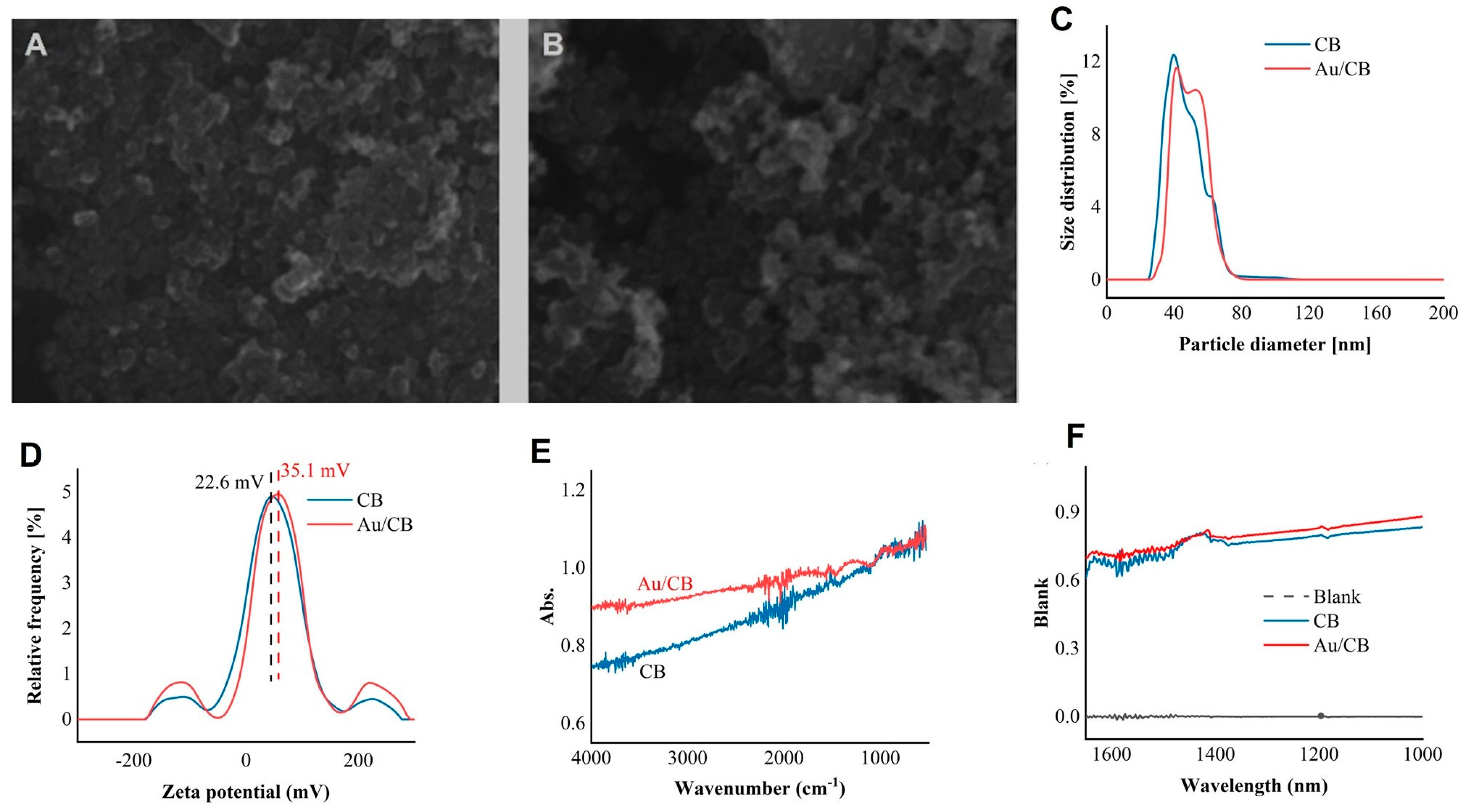
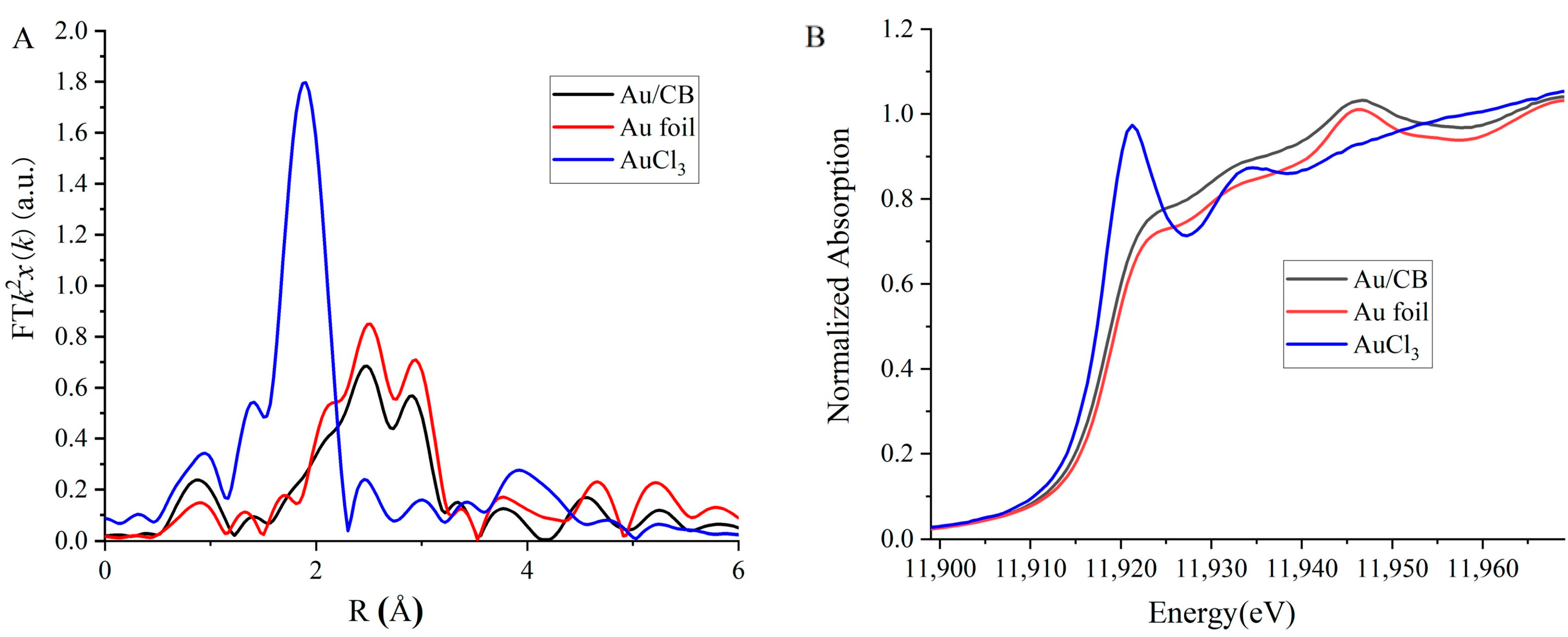
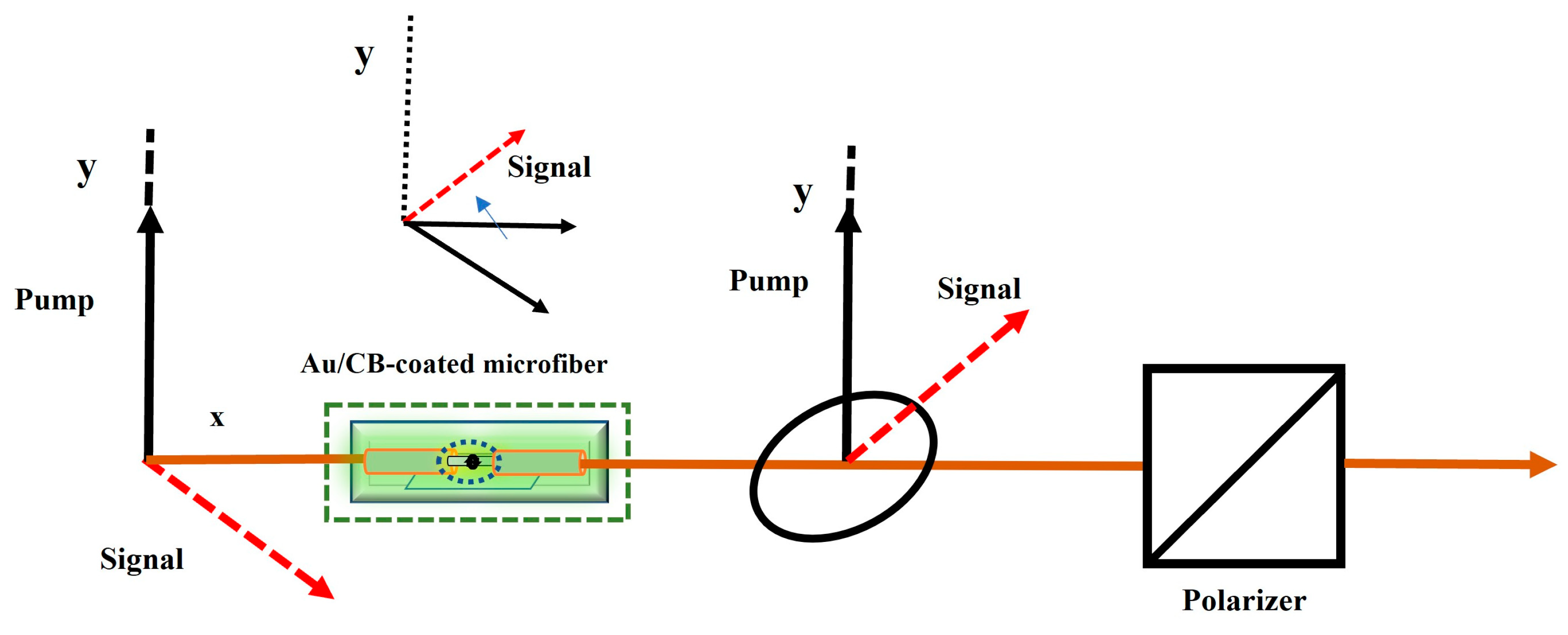
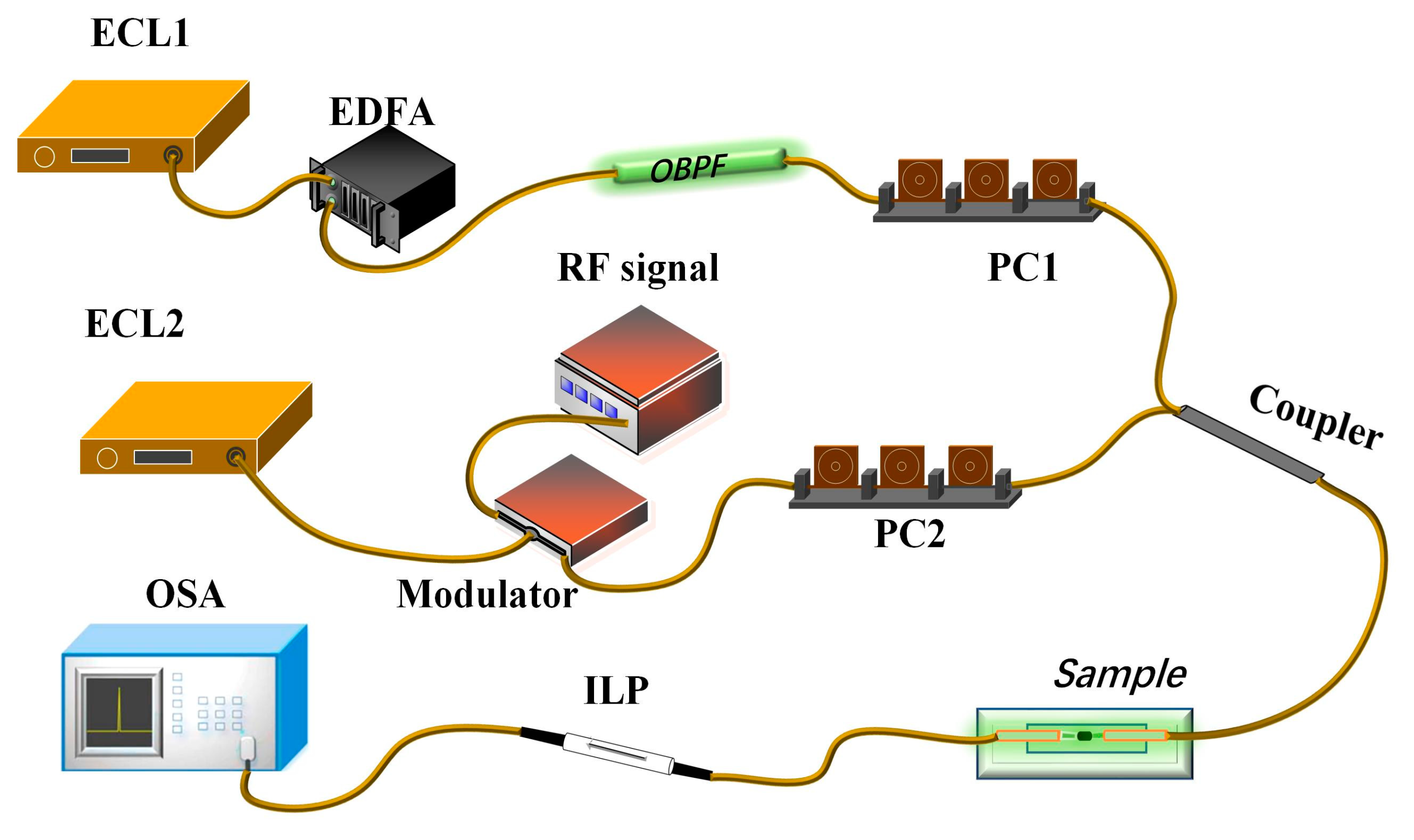


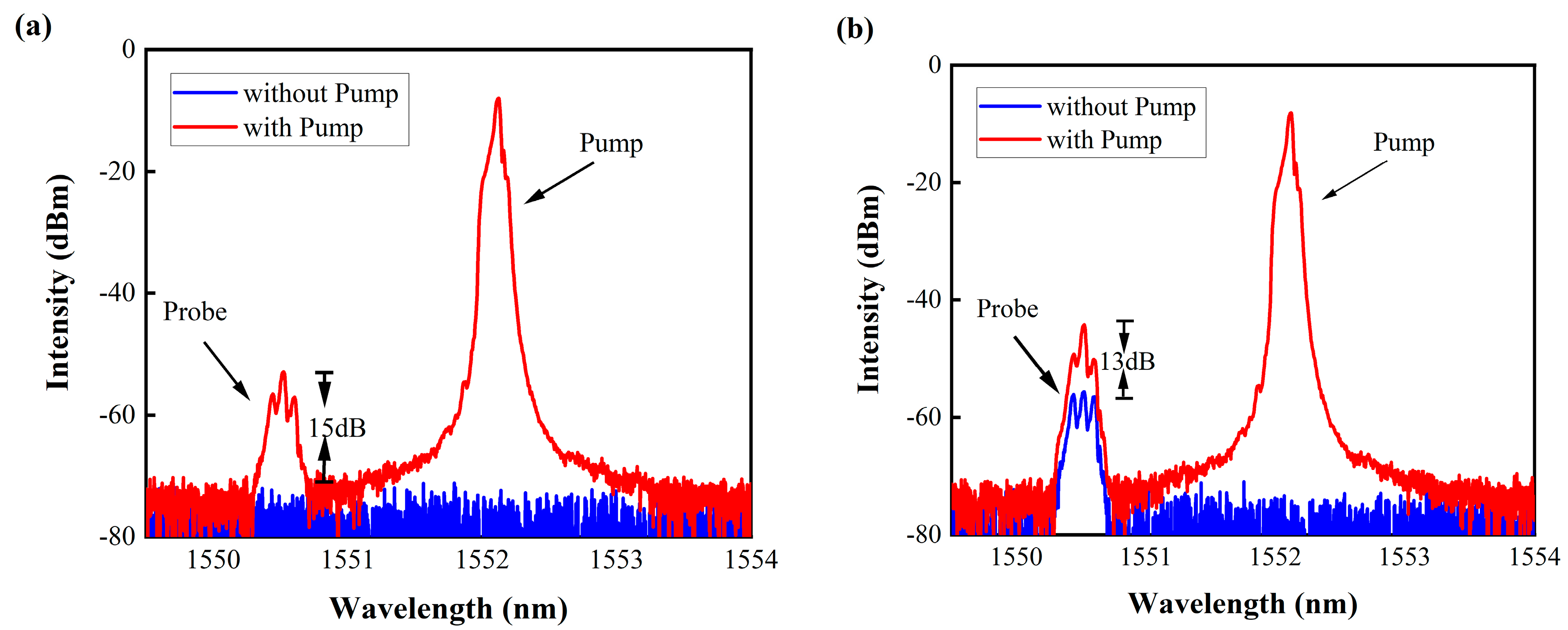
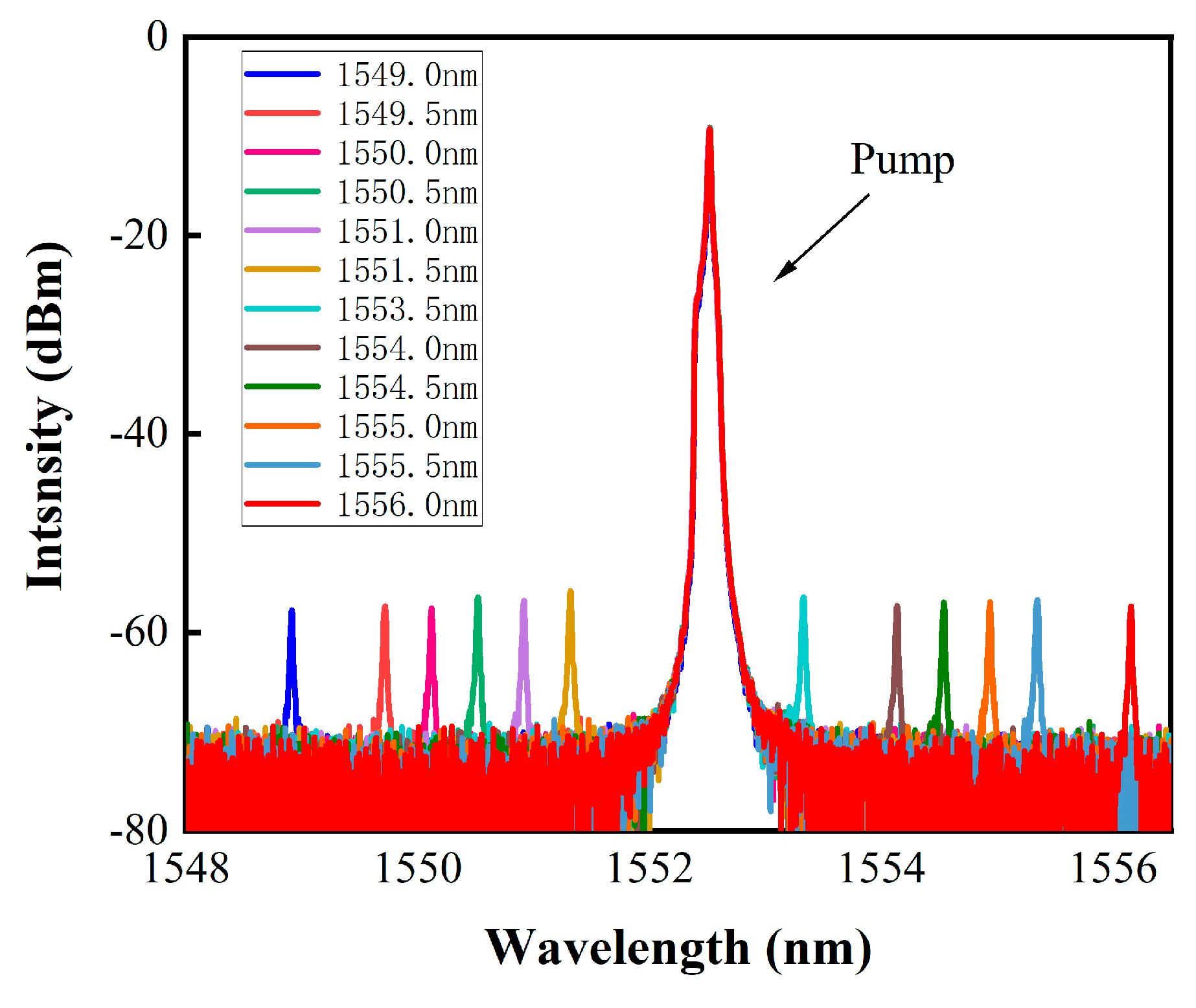

| Sample | Intensity (dBm) | Modulation Depth (dB) | Stability | Signal Frequency | Pump Power (mW) |
|---|---|---|---|---|---|
| TCM [27] | - | 14 | - | - | 250 |
| BP [28] | −53.6~−26.9 | 26 | <2 days | - | 300 |
| FLA [29] | −50~−37 | 13 | - | - | 316 |
| FLB [30] | −59.6~−37.6 | 22 | - | - | 320 |
| BPQD [31] | −56~−36 | 20 | <2 weeks | - | 160 |
| THM [32] | −60~−33 | 27 | >1 month | - | 200 |
| Au/CB | –~−55 | 15 | >2 month | 10 GHz | 320 |
Disclaimer/Publisher’s Note: The statements, opinions and data contained in all publications are solely those of the individual author(s) and contributor(s) and not of MDPI and/or the editor(s). MDPI and/or the editor(s) disclaim responsibility for any injury to people or property resulting from any ideas, methods, instructions or products referred to in the content. |
© 2023 by the authors. Licensee MDPI, Basel, Switzerland. This article is an open access article distributed under the terms and conditions of the Creative Commons Attribution (CC BY) license (https://creativecommons.org/licenses/by/4.0/).
Share and Cite
Wang, K.; Xie, Z.; Ji, J.; Song, Y.; Zhang, B.; Wang, Z. Novel Optical Kerr Switching Photonic Device Based on Nonlinear Carbon Material. Micromachines 2023, 14, 2216. https://doi.org/10.3390/mi14122216
Wang K, Xie Z, Ji J, Song Y, Zhang B, Wang Z. Novel Optical Kerr Switching Photonic Device Based on Nonlinear Carbon Material. Micromachines. 2023; 14(12):2216. https://doi.org/10.3390/mi14122216
Chicago/Turabian StyleWang, Ke, Zhoufa Xie, Jianhua Ji, Yufeng Song, Bin Zhang, and Zhenhong Wang. 2023. "Novel Optical Kerr Switching Photonic Device Based on Nonlinear Carbon Material" Micromachines 14, no. 12: 2216. https://doi.org/10.3390/mi14122216
APA StyleWang, K., Xie, Z., Ji, J., Song, Y., Zhang, B., & Wang, Z. (2023). Novel Optical Kerr Switching Photonic Device Based on Nonlinear Carbon Material. Micromachines, 14(12), 2216. https://doi.org/10.3390/mi14122216







